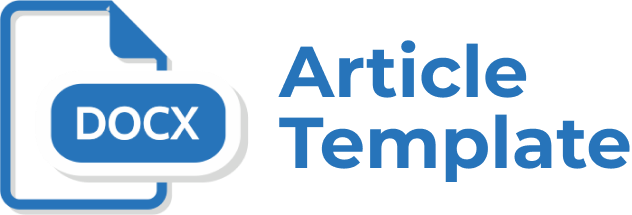Penentuan Goodwill Pendekatan Dua Kolom dengan Memperhitungkan Unsur Pajak Penghasilan pada Laporan Keuangan Kombinasi Bisnis
Abstract
The assets and liabilities of the acquiree and the acquirer are combined because of the business merger. The value of goodwill will be recognized if there is a discrepancy between the entire investment value and the value of assets and liabilities recognized, or equity eliminated. Financial Accounting Standards No. 22 of 2014 solely considers the fair value of the net assets purchased for determining goodwill. The aim of this study is to define the amount of goodwill is determined using the two-column approach in PSAK 22 2014 when considering the income tax aspect of a business combination because, in accordance with the tax law, a business combination is an object of income tax. This study is qualitative descriptive that relies on doing literature reviews pertaining to the computation of goodwill. From the discussion's findings, it can be inferred that the acquirer would recognize more tax debt when assets and liabilities are combined, increasing goodwill. The calculation of goodwill when accounting for income tax components may be expressed algebraically: goodwill = consideration provided + prior ownership plus non-controlling interests plus taxes due minus net assets. Theoretically, the result is that the amount of goodwill recognized and recorded will increase in proportion to the amount of tax debt that is recognized when assets and liabilities are combined. The amount of tax that must be realized by the acquirer is implied managerially to be proportionate to the net assets that the acquirer has acquired.
Keywords
Full Text:
PDFReferences
Aldeia, S. (2021). The goodwill of business concentrations. accounting, tax, and arbitral court perceptions in Portugal. Journal of Legal, Ethical and Regulatory Issues, 24(Special Issue 1), 1–10.
Amir, E., & Ghitti, M. (2021). Financial Analysis of Mergers and Acquisitions: Understanding Financial Statements and Accounting Rules with Case Studies. In Financial Analysis of Mergers and Acquisitions: Understanding Financial Statements and Accounting Rules with Case Studies. https://doi.org/10.1007/978-3-030-61769-1
Aulia, T. Z., & Hamdani, H. (2020). Implementasi Sak Etap Sebagai Upaya Meningkatkan Kualitas Laporan Keuangan Dan Pengaruhnya Terhadap Kesehatan Koperasi Di Kota Tangerang. COMPETITIVE Jurnal Akuntansi Dan Keuangan, 4(2), 130. https://doi.org/10.31000/c.v4i2.2817
Azalia, A. O. (2023). Keterkaitan antara psak no. 22 kombinasi bisnis terhadap penyusunan laporan keuangan konsolidasian. 10(2).
Beams, F. A. (2000). Akuntansi Keuangan Lanjutan di Indonesia. Salemba Empat.
Belz, T., Robinson, L. A., Ruf, M., & Steffens, C. (2016). Tax avoidance as a driver of mergers and acquisitions?*. https://ssrn.com/abstract=2371706
Chow, T., Klassen, K., Liu, Y., thank Andy Bauer, W., Bauer, T., Eiler, L., Guenther, D., Gu, T., Hamilton, R., Macnaughton, A., Mills, L., Hogan, ---Randall, & Stauch, J. (2014). Anticipated tax planning as a source of merger gains. https://ink.library.smu.edu.sg/soa_research/1634
Drebin, A. R. (2005). Advanced Accounting, 5th edition. South Western Publishing.
Duarte, D., & Barros, V. (2018). Corporate tax avoidance and profitability followed by mergers and acquisitions. Corporate Ownership and Control, 15(2–1), 148–160. https://doi.org/10.22495/cocv15i2c1p2
Erickson, M. (1998). The Effect of Taxes on the Structure of Corporate Acquisitions. Journal of Accounting Research, 36(2), 279–298. https://doi.org/10.2307/2491478
Erickson, M. M., & Wang, S. (2007). Tax Benefits as a Source of Merger Premiums in Acquisitions of Private Corporations. The Accounting Review, 82(2), 359–387. http://www.jstor.org/stable/30243470
Fich, E. M., Rice, E. M., & Tran, A. L. (2017). Corporate tax cuts, merger activity, and shareholder wealth. Proceedings. Annual Conference on Taxation and Minutes of the Annual Meeting of the National Tax Association, 110, 1–58. https://www-jstor-org.ezproxy.ugm.ac.id/stable/26794494
IAI. (2014). PSAK 22: Kombinasi Bisnis.
Jati, A. W. (2004). Akuntansi Keuangan Lanjutan. Universitas Muhamadiyah Malang.
Kaplan, S. (1989). Management Buyouts: Evidence on Taxes as a Source of Value. The Journal of Finance, 44(3), 611–632. https://doi.org/10.2307/2328773
Lynch, D., Romney, M., Stomberg, B., Wangerin, D., & Robinson, J. R. (2019). Trade-offs between Tax and Financial Reporting Benefits: Evidence from Purchase Price Allocations in Taxable Acquisitions. Contemporary Accounting Research, 36(3), 1223–1262. https://doi.org/10.1111/1911-3846.12484
Martani, D., Hidayat, T., Setya, A., & Maulana, T. I. (2016). Akuntansi Keuangan Lanjutan 1. Salemba Empat.
Martins, A., Sá, C., & Taborda, D. (2022). Fair Value and Corporate Taxation: Out through the Door, Back through the Window? Accounting, Economics and Law: A Convivium. https://doi.org/10.1515/ael-2021-0046
PMK. (2017). Penggunaan Nilai Buku Atas Pengalihan dan Perolehan Harta dalam Rangka Penggabungan, Peleburan, Pemekaran, atau Pengambilalihan Usaha.
PMK. (2018). Perubahan Atas Peraturan Menteri Keuangan Nomor 52/PMK.010/2017 tentang Penggunaan Nilai Buku Atas Pengalihan dan Perolehan Harta Dalam Rangka Penggabungan, Peleburan, Pemekaran, Atau Pengambilalihan Usaha.
PP. (2016). Pajak Penghasilan Atas Penghasilan Dari Pengalihan Hak Atas Tanah dan/atau Bangunan dan Perjanjian Pengikatan Jual Beli atas Tanah dan/atau Bangunan Beserta Perubahannya.
PP. (2020). Penurunan Tarif Pajak Penghasilan bagi Wajib Pajak Badan Dalam Negeri yang Berbentuk Perseroan Terbuka.
Rendy Indra Susanto. (2019). Analisis Strategi Pengembangan Bisnis Pada Pt. Patrinsaka. Journal of Chemical Information and Modeling, 53(9), 1689–1699.
Rytami, I., & Mutumanikam, P. R. (2021). Valuasi Nilai Saham Perusahaan Non-Tbk dalam Pelaksanaan Impairment Goodwill. Jurnal Akuntansi Trisakti, 8(2), 209–226. https://doi.org/10.25105/jat.v8i2.9488
Setyanida, W. D., & Srimindarti, C. (2021). Pengaruh Kondisi Keuangan, Debt Default, Ukuran Perusahaan, Dan Pertumbuhan Perusahaan Terhadap Penerimaan Opini Audit Going Concern. Simak, 19(01), 126–140. https://doi.org/10.35129/simak.v19i01.177
Solihin, M. M. (2011). Metode Penelitian Pendidikan. Pustaka Setia.
UU. (1994). Undang-Undang Republik Indonesia Nomor 10 Tahun 1994 Tentang Perubahan Atas Undang-Undang Nomor 7 Tahun 1983 Tentang Pajak Penghasilan Sebagaimana Telah Diubah Dengan Undang-Undang nomor 7 Tahun 1991.
UU. (2021). Undang-undang (UU) tentang Harmonisasi Peraturan Perpajakan.
DOI: https://doi.org/10.32487/jshp.v8i2.2011
Refbacks
- There are currently no refbacks.
JSHP: Jurnal Sosial Humaniora dan Pendidikan
is licensed under a Creative Commons Attribution-ShareAlike 4.0 International License (CC BY-SA 4.0)



